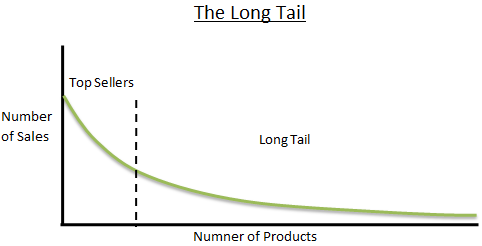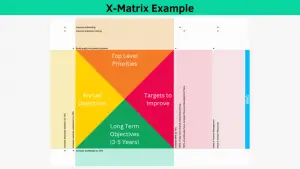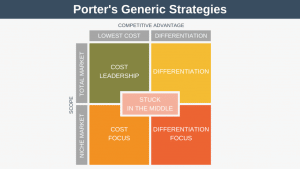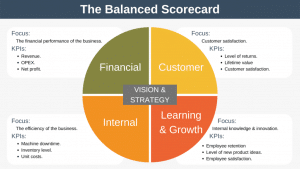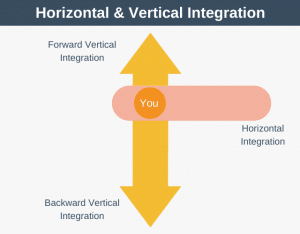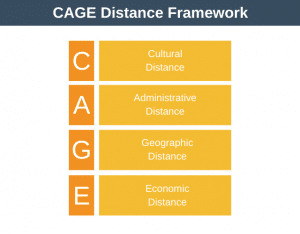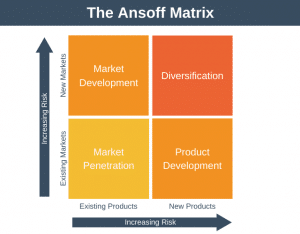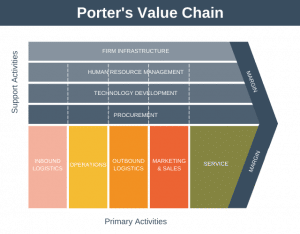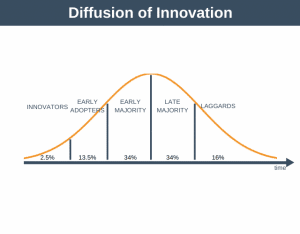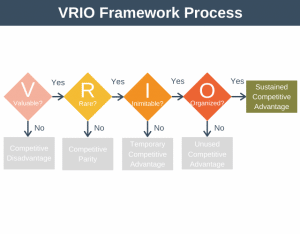In this diagram you can see that the long tail accounts for over 50% of the products sold, and top sellers (or blockbuster products) account for less than 50% of the products sold.
The term Long Tail was first used by Chris Anderson to describe the shift which was underway in the media business from selling a small number of bestseller products towards selling a very large quantity of niche products, but each in small quantities. The total sales which come from the Long Tail can be in aggregate exceed sales from the top of the curve.
Another great example of a Long Tail business is eBay. The success of this business is based on a vast quantity of sellers both buying and selling small quantities of niche or non bestseller items.
Do not confuse a long tailed distribution with the Pareto principle. In the Pareto principle 80% of sales would be accounted for in the first 20% of the distribution, whereas with long tailed distributions the biggest sellers account for less than 50% of total sales, thus making the tail of the distribution more important in aggregate than blockbuster sales.
Long Tail Financials
What are the drivers that make it possible for companies to focus their efforts on the Long Tail? There are two perspectives to look at this from: the customers and the suppliers.
- The customer perspective: online tools such as search engines and recommendation engines are allowing customers to find products outside their immediate area; niche products that they would not have previously had access to.
- The supplier perspective: If holding inventory is negligible in cost then it becomes very profitable for the supplier to focus towards the long tail. This could be because the product is digital or because a central warehouse is used. Additionally, there is less competition in the long tail by nature so advertising costs will be proportionately less for long tail products.
Another interesting way to think about these dynamics is that traditionally the Internet has been thought of as focusing on supply, that is, reducing costs. However, given the above you can also see it driving and growing the demand side, as consumers search for and discover products in the Long Tail they would previously never have even thought available.
